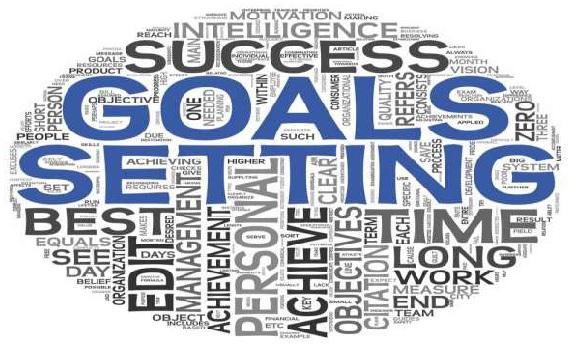Employee Motivation - Setting Goals
As we have understood that motivation is an important factor in employees’ performance and for motivating, there have been a number of theories proposed by many behaviorists for motivating different people in different situations and at different places etc. In this chapter, we will discuss another theory of motivation called as the “Goal − Setting Theory of Motivation”.

This motivation theory was put forward by Behavioral Scientist Edwin Locke in the year 1960.This theory states that the goal setting is very essentially linked to the task performance.
Goal-Setting Theory for Employee Motivation
Whatever a human being does; he/she does it for a definite purpose or goal. An organization sets certain goals for its employees. Employees’ willingness to work towards the attainments of the goals is the main source of employees’ motivation. Set goals move and direct employees as to what needs to be achieved and the required efforts to attain achievement of goals. The clearer the goal is the better is the performance of the employees.
Goals act as driving force for employees and exert tremendous impact on employee behavior and performance in an organization. Modern organizations invariably have their own goal setting forms put in operation. Management by objectives (MBO), Management Information System (MIS) and a host of modern management Programmes are set goals organizations strive to achieve.
The simple act of setting an effective goal gives a person a fairer chance of realizing the goal. So, setting the goal is as important as having the goals.
Important Features of the Goal-Setting Theory
The main source of job motivation is the willingness to work towards the attainment of the goal. Having clear, difficult and a particular goal are better motivating factors than the general, vague and easy goals.
Goals should be challenging and realistic. For gaining a great reward, the goal set should be difficult and challenging, which creates a passion for achieving it.
For making the goal more acceptable, the participation in setting the goal is very important, which entails more employee involvement.
By providing an appropriate and a better feedback will direct the employee behavior and contribute to a higher performance than the absence of the feedback. This will make the employee more satisfied with his job and helps in the clarifications and the regulations in the goal difficulties
Clear and specific goals will lead to a better performance and a greater output. Misunderstanding can be avoided by having a clear and measurable goals that are to be accompanied by a deadline for the completion
Eventualities of Goal-Setting Theory
Self-efficiency − It is the individual’s faith and the self-confidence that one has
the potential to perform certain task. An individual having the higher level of selfefficiency, the greater will be the efforts put by him/her when his/she is facing the challenging task and vise-versa.
Goal Commitment − The theory of goal-setting has an assumption that an individual will be committed to his/her goal and will not leave the goal in between without accomplishing it. Goal commitment depends upon the following factors −
- Goals are made known, broadcasted and open
- Goals should not be designated, rather it should be set by self
- Individual’s goals should match with the organization’s vision and goals



